Why Toxic Water is a Leading Risk Factor in Kidney Cancer
Coinciding with rising global concerns about water quality, research links contaminated water to an increased risk of kidney cancer.
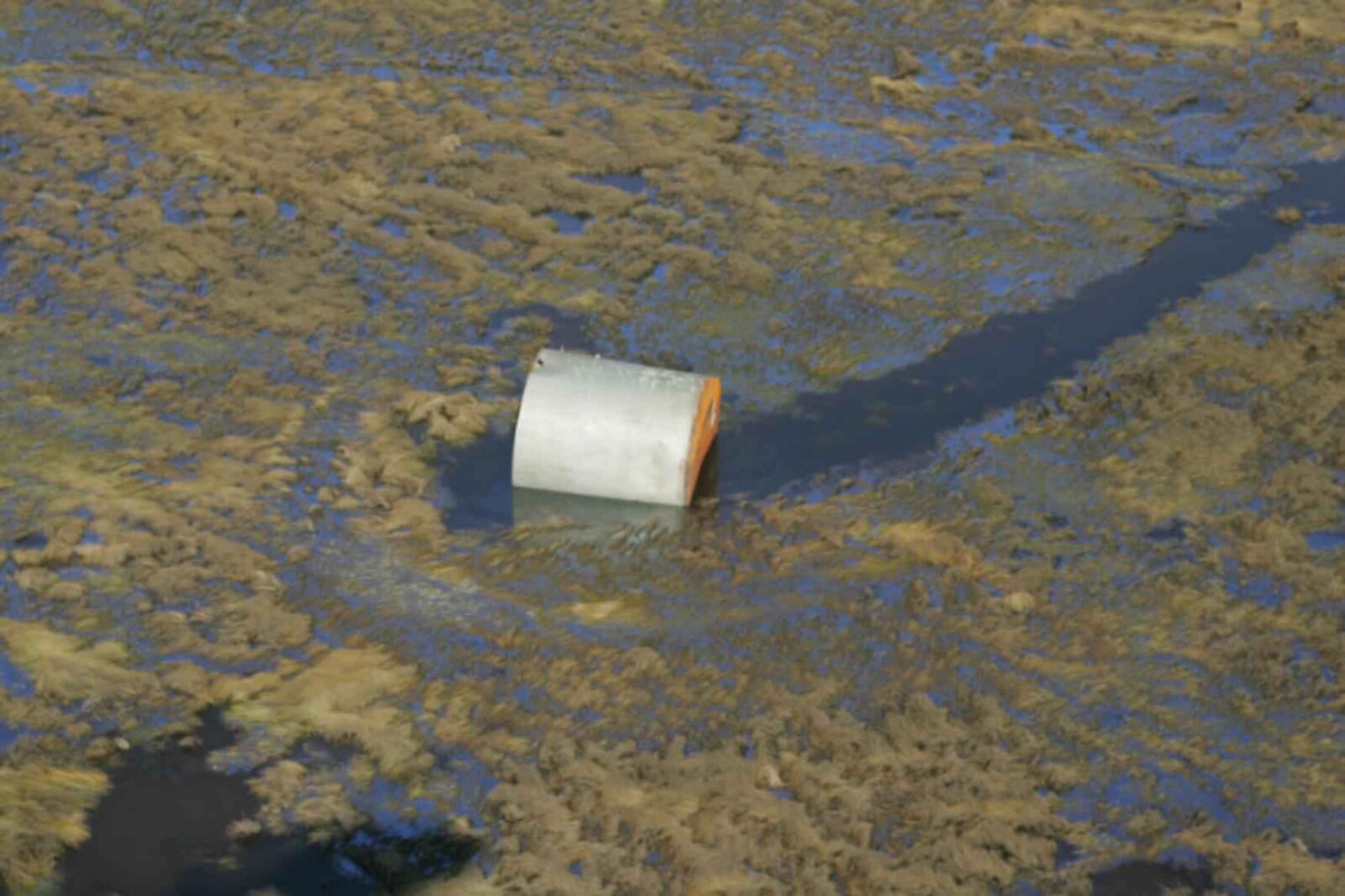
This study explores the relationship between waterborne contaminants, such as heavy metals and pesticides, and the occurrence of this disease.
Emphasizing the importance of water quality testing and public health policies, it proposes strategies for reducing kidney cancer risk through improved water safety.
Key Takeaways
- Kidney cancer, scientifically known as renal cell carcinoma, originates in the lining of the proximal convoluted tubule in the kidneys.
- Symptoms of kidney cancer include blood in urine, lower back pain, and unexplained weight loss.
- Contaminants in drinking water, such as heavy metals and organic pollutants, can contribute to kidney cancer by causing kidney damage and disrupting hormonal balance.
- Improving water quality through filtration methods like distillation, activated carbon, reverse osmosis, and ion exchange is crucial in mitigating the risk factors associated with kidney cancer.
Understanding Kidney Cancer: An Overview

Kidney cancer, scientifically termed as renal cell carcinoma, is a complex disease characterized by the uncontrolled growth of kidney cells, leading to the formation of tumors. This malignancy typically originates in the lining of the proximal convoluted tubule, a part of the kidney's intricate filtration system. Understanding the basics of kidney function can provide a clearer perspective on how this disease disrupts the body's normal operations.
The kidneys, paired organs located above the waist, are tasked with several vital functions. They maintain the body's fluid balance, regulate electrolytes, filter waste products from the bloodstream, and contribute to red blood cell production. When kidney cancer develops, these functions are compromised, resulting in a range of symptoms such as blood in urine, lower back pain, and unexplained weight loss.
The identification of kidney cancer generally involves multiple diagnostic tests, including blood and urine tests, imaging tests, and biopsy. Once confirmed, the choice of cancer treatment options largely depends on the stage of the disease, the patient's overall health, and personal preferences. Surgical intervention, including partial or total nephrectomy, remains the primary treatment. However, for patients unable to undergo surgery, alternative methods such as targeted therapy, immunotherapy, and radiation therapy may be considered.
Understanding the disease, its impact on kidney function, and the available treatment options are crucial steps towards managing kidney cancer efficiently. This knowledge can guide patients and healthcare providers in making informed decisions about treatment strategies, ultimately improving outcomes and quality of life for those affected by this disease.
The Role of Water Quality in Health
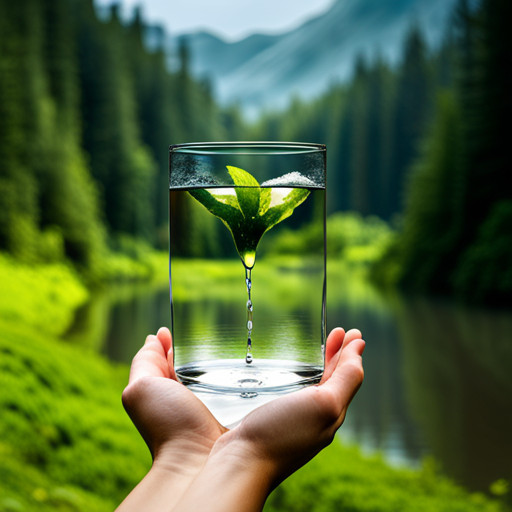
Investigating the impact of water quality on health requires a comprehensive examination of various interconnected elements. Namely, the presence of contaminants in drinking water, the subsequent health effects of pollution, and potential strategies for improving water quality.
A detailed study of the diverse pollutants present in drinking water provides insight into their potential hazards. This includes heavy metals, microorganisms, and industrial residues. Understanding the presence of these pollutants is crucial in assessing the risks they pose to human health.
Furthermore, the exploration of the health effects of such pollutants not only underscores the significance of this issue but also prompts the necessity for effective measures to enhance water quality. By identifying the specific health risks associated with contaminated water, it becomes clear that action must be taken to protect public health.
Therefore, improving water quality is essential in mitigating the associated health risks. Implementing strategies and interventions to reduce contaminants and improve the overall quality of drinking water is crucial in safeguarding the well-being of individuals and communities.
Contaminants in Drinking Water
Exposure to contaminants in drinking water, such as heavy metals and organic pollutants, has been linked to an increased risk of developing kidney cancer. The process of water fluoridation, designed to prevent tooth decay, has raised concerns about potential health risks, including kidney damage. Similarly, the safety of bottled water has been questioned due to contamination during storage and transport.
- Heavy metals in water can accumulate in the body over time, leading to kidney and other organ damage.
- Organic pollutants, such as pesticides, disrupt the body's natural hormonal balance and can cause kidney cancer.
- Water fluoridation, while beneficial for dental health, can pose risks if fluoride levels are too high.
- Bottled water safety is not guaranteed, as contaminants can be introduced during the bottling process.
- Vulnerable populations, including children and the elderly, are at higher risk from water contaminants.
Health Effects of Pollution
Airborne pollutants, such as fine particulate matter and nitrogen dioxide, have been associated with an array of detrimental health outcomes, including respiratory and cardiovascular diseases. These pollutants significantly impact air quality and have been linked to a number of pollution induced allergies.
The microscopic size of fine particulate matter allows it to be easily inhaled, leading to inflammation and damage in the respiratory system. Nitrogen dioxide, primarily emitted from burning fossil fuels, contributes to the formation of smog and exacerbates respiratory conditions.
Furthermore, studies reveal a correlation between chronic exposure to these pollutants and the prevalence of cardiovascular diseases. As such, the impact of these pollutants on air quality poses a significant threat to public health.
Improving Water Quality
Efforts to enhance the purity of aquatic resources have been gaining momentum, focusing on the reduction of contaminants such as heavy metals, microplastics, and harmful bacteria in order to safeguard human health and protect aquatic biodiversity.
A number of water filtration methods have been developed and deployed to improve water quality. The benefits of hydration, particularly with clean, uncontaminated water, are numerous and include improved kidney function and overall health.
- Distillation: A process of boiling water and collecting the vapor, which leaves behind contaminants.
- Activated Carbon: Absorbs impurities as water passes through.
- Reverse Osmosis: Forces water through a semipermeable membrane, rejecting most contaminants.
- Ion Exchange: Specifically designed to remove ions like calcium and magnesium.
- Mechanical Filters: Remove larger particles and debris.
The Connection Between Water Contaminants and Kidney Cancer

The identification of contaminants in water sources is an imperative step in elucidating their potential impact on kidney health. The impacts of these contaminants on the renal system have been linked to not only immediate kidney damage but also to the development of kidney cancer over time.
Consequently, in order to develop effective preventative measures for kidney cancer, there is a pressing need to understand the correlation between water contaminants and their long-term effects on renal health.
Identifying Water Contaminants
Identification of water contaminants plays a crucial role in understanding and mitigating the risk factors associated with kidney cancer. Industrial waste contributes significantly to water pollution, introducing harmful contaminants into the water supply. Effective contaminant filtration is necessary to ensure the safe consumption of water.
- Industrial waste often contains heavy metals, such as lead or mercury, which are known carcinogens.
- Other common contaminants include pesticides and nitrates, which can infiltrate water supplies through agricultural runoff.
- Industrial solvents, such as tetrachloroethylene, can seep into groundwater.
- Bacteria and viruses, although often naturally occurring, can also pose a risk when present in large quantities.
- Radioactive substances, a byproduct of certain industrial processes, can contaminate water supplies and pose serious health risks.
Understanding these contaminants allows for the development of effective filtration strategies.
Contaminants Impact on Kidneys
Exposure to certain contaminants, such as heavy metals and pesticides, has been scientifically linked to the development of renal diseases. These environmental toxins can have a significant impact on kidney detoxification processes. Chronic exposure to such substances may result in the accumulation of toxins which the kidneys, despite their robust detoxification capabilities, may struggle to eliminate. This build-up can subsequently lead to the degeneration of renal tissues and cells, potentially resulting in the onset of kidney diseases.
Research also suggests a correlation between exposure to these toxins and the increased prevalence of kidney cancer. Therefore, the mitigation of exposure to such environmental toxins is critical in reducing the incidence of renal diseases.
Preventing Kidney Cancer
Mitigation strategies for renal carcinomas should incorporate efforts to reduce contact with environmental contaminants, given the established correlation between such substances and the onset of renal diseases. Dietary Changes and Lifestyle Modifications also play a significant role in reducing the risk of developing kidney cancer.
To provide a visual representation of preventive strategies, consider the following:
- Limiting exposure to environmental toxins, especially in drinking water
- Implementing dietary changes that reduce the consumption of processed foods and increase intake of fresh fruits, vegetables, and lean proteins
- Increasing physical activity as part of lifestyle modifications to maintain a healthy weight
- Avoiding tobacco use and limiting alcohol consumption
- Regular health check-ups to detect early signs of renal diseases.
These interventions could significantly decrease the risk of renal carcinomas.
The Impact of Heavy Metals on Kidney Health

Heavy metals, when ingested through contaminated water, can lead to significant damage to the kidneys over time. The kidneys are responsible for maintaining homeostasis by filtering out toxins from the body. However, the presence of heavy metals such as lead, mercury, and cadmium can disrupt this process, leading to the accumulation of these toxins in the kidneys. Over time, this can cause kidney disease and increase the risk of kidney cancer.
One of the ways to treat heavy metal toxicity is through Metal Chelation Therapy. This therapy involves the administration of chelating agents that bind to heavy metals in the body, forming a complex that is easily excreted through urine. This therapy is particularly effective in the treatment of lead, mercury, and arsenic poisoning. However, it is not without its side effects, which may include kidney damage, hence it should be administered under strict medical supervision.
Dietary Interventions can also play a substantial role in reducing heavy metal toxicity. Certain foods, particularly those rich in antioxidants and essential minerals, can help in the excretion of heavy metals. For example, foods rich in Vitamin C and E, selenium, and zinc can help in the detoxification process. In addition, keeping oneself well-hydrated can enhance kidney function and flush out toxins from the body.
The Dangers of Pesticides in Drinking Water

The pervasive use of pesticides in agriculture and their subsequent impact on health through contamination of water sources necessitates thorough examination.
In-depth exploration of the myriad health consequences linked to pesticide exposure, with a particular focus on the contamination of crucial water sources, reveals the extent of the potential harm these chemicals can cause.
Strategies to prevent pesticide exposure, both direct and indirect, are essential to mitigate these risks, shedding light on the importance of sustainable agricultural practices and effective water purification methods.
Pesticides’ Impact on Health
Exposure to pesticides, particularly through contaminated water, has been strongly linked to adverse health outcomes including kidney cancer. Regulatory measures, such as those under Pesticide Regulation, aim to mitigate these harmful effects by setting maximum residue limits in food and water.
Despite these measures, the pervasive use of pesticides in conventional farming continues to pose significant health risks. Organic farming, which largely avoids the use of synthetic pesticides, is often proposed as an alternative. However, the affordability and accessibility of organic produce remain challenging.
In summary, the following points are critical:
- Pesticide exposure is linked to kidney cancer
- Pesticide Regulation sets residue limits
- Conventional farming contributes to pesticide exposure
- Organic farming can be a safer alternative
- Affordability and accessibility of organic produce are issues.
Contaminated Water Sources
Contaminated sources of hydration, primarily from pesticide runoff, present significant challenges for public health and environmental protection. These pollutants have been linked to an increase in waterborne diseases, posing a threat to human health. The consumption of contaminated water can lead to harmful conditions, such as kidney cancer.
Moreover, the aquatic biodiversity is severely affected by the introduction of these harmful substances into the ecosystem. Various species of flora and fauna residing in these aquatic environments suffer from the lethal and sub-lethal effects of pesticide contamination. This not only disrupts their physiological functions but also alters their reproductive patterns. Consequently, this could lead to a decrease in the population of certain species, thereby disturbing the balance of the ecosystem.
Preventing Pesticide Exposure
Preventing pesticide exposure necessitates the implementation of rigorous practices, education, and regulations aimed at reducing the environmental footprint caused by agricultural activities. It is vital to explore pesticide alternatives, giving consideration to organic farming practices, to mitigate the risk of kidney cancer from toxic water.
Use of botanical pesticides: These are derived from plants and are considered less harmful to the environment.
Biological control methods: This involves the use of natural enemies to control pests.
Crop rotation: This practice confuses pests, therefore reducing their populations.
Organic farming: This practice prohibits the use of synthetic pesticides.
Use of biopesticides: These are derived from natural materials such as animals, bacteria, and certain minerals.
These alternatives to traditional pesticides can significantly reduce the environmental and health impacts of agricultural activities.
Chlorine in Water and Its Effect on the Kidneys

Chlorine, commonly used in water treatment processes, has been associated with adverse kidney health, potentially increasing the risk of kidney-related diseases. Its prevalent use is owed to its efficacy in eradicating harmful microorganisms, yet concern arises from its potential for chlorine absorption into the human body. The absorption of chlorine, particularly through ingestion and dermal contact, could lead to renal dysfunction.
Research indicates that the kidney, tasked with filtering toxins from the bloodstream, can be significantly affected by the consistent presence of chlorine. Studies have suggested a correlation between long-term exposure to chlorinated water and the development of chronic kidney disease, although more extensive research is necessary to solidify this link.
Beyond the direct impact on kidney health, chlorine can interact with organic matter in water to form disinfection byproducts (DBPs). These byproducts have been linked to an array of health problems, including kidney diseases. The trihalomethanes (THMs), a common group of DBPs, have been specifically associated with kidney disorders.
Given the potential health risks, exploring chlorine alternatives becomes imperative. Alternatives such as ozone, ultraviolet (UV) radiation, and activated carbon have been identified. However, each alternative presents its own set of challenges and benefits concerning effectiveness, cost, and potential health impacts. Therefore, a comprehensive evaluation of these alternatives is crucial to ensure the provision of safe, clean water.
Consequences of Industrial Pollution on Water Quality
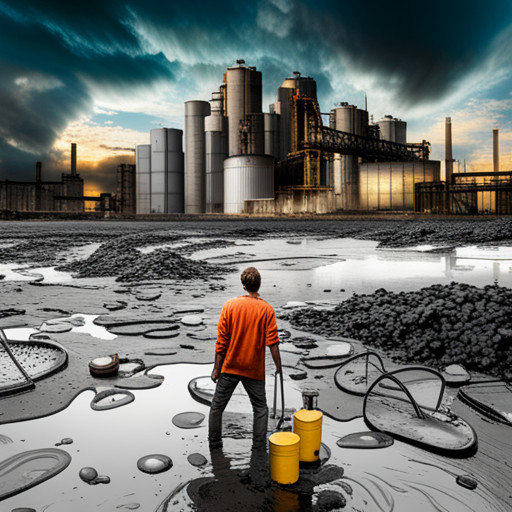
Industrial pollution significantly compromises the quality of aquatic resources, posing serious threats to both human and ecosystem health. The discharge of industrial waste into water bodies directly impacts the physical, chemical, and biological attributes of aquatic ecosystems. This contamination can cause significant alterations in water quality, leading to the degradation of the overall health of these ecosystems.
Industrial pollutants, including heavy metals, organic pollutants, and radioactive substances, can have severe ramifications. These pollutants often have a high persistence in the environment, meaning their effects can be long-lasting and widespread.
The impacts of industrial waste on aquatic ecosystems can be categorized into the following:
- Alteration of water chemistry: Industrial waste often contains chemicals that can drastically alter the natural balance of water bodies, leading to harmful conditions for aquatic life.
- Impact on aquatic life: Pollutants can lead to significant mortality rates in aquatic species, impacting biodiversity and disrupting food chains.
- Bioaccumulation of toxic substances: Certain pollutants can accumulate in the tissues of aquatic organisms, causing harm over time and potentially entering the human food chain.
- Eutrophication: Nutrient-rich industrial waste can cause an overgrowth of algae, leading to oxygen depletion and the death of aquatic life.
- Disease in humans: Polluted water can lead to a range of diseases in humans, including kidney cancer, when consumed or used for recreational purposes.
The Risk of Kidney Cancer in Areas With Poor Water Quality

Exposure to contaminated aquatic resources in regions plagued by poor quality has been linked to an elevated incidence of renal malignancies. The exploration of genetic susceptibility has highlighted the interaction between environmental factors and genetic predisposition in the development of such conditions. Studies indicate the critical role of a renal diet in maintaining kidney health and reducing the risk of malignancies.
| Contaminants | Mechanism of Action | Consequences |
|---|---|---|
| Heavy Metals | Bioaccumulation and Biomagnification | Kidney Damage, Renal Malignancies |
| Organic Chemicals | Metabolic Disruption | Renal Dysfunction, Renal Malignancies |
| Biological Contaminants | Infection and Inflammation | Chronic Kidney Diseases, Renal Malignancies |
This table illustrates the direct link between various contaminants often found in poor quality water and renal health issues, including malignancies.
Heavy metals, such as lead and mercury, can bioaccumulate in the body, leading to kidney damage and renal malignancies. Organic chemicals disrupt metabolic processes, leading to renal dysfunction and potentially, renal malignancies. Biological contaminants can cause infections and inflammation, leading to chronic kidney diseases or renal malignancies.
The importance of a renal diet, rich in essential nutrients and low in sodium, potassium, and phosphorous, cannot be overstated. It helps to maintain optimal kidney function and reduce the risk of renal malignancies.
The Process of Kidney Damage From Toxic Water

The alarming impacts of toxic water on human health, specifically its influence on kidney damage, necessitate a comprehensive examination.
This exploration will delve into the effects of toxic components in water, such as heavy metals and other pollutants, outlining how they can lead to significant deterioration of kidney function.
Detailed study of the underlying mechanisms, including the role of oxidative stress and inflammation, will further illuminate how these toxins instigate renal impairment and set the stage for chronic kidney disease.
Toxic Water’s Effects
Research has consistently linked consumption of toxic water to a significant increase in the incidence of kidney cancer. This correlation is attributed to the role of water filtration in kidney detoxification. An efficient filtration system is crucial to eliminate toxins, but exposure to harmful substances in water can overwhelm this system, leading to kidney damage.
The impact of toxic water on the kidneys can be represented as follows:
- Impaired filtration capabilities due to overload of toxins
- Disruption of the kidney's detoxification process
- Increased risk of kidney diseases, including cancer
- Inflammation and damage to kidney cells
- Potential for chronic kidney disease progression
Kidney Damage Mechanisms
Understanding the mechanisms through which harmful substances damage the renal system necessitates a closer examination of the filtration and detoxification processes. A key factor is the role of Kidney Dialysis Processes in removing toxins from the blood, which can be impaired by persistent exposure to harmful substances.
This situation is further complicated by Genetic Predispositions, which can make certain individuals more susceptible to renal damage.
The following table provides an overview of this complex interplay:
| Kidney Dialysis Processes | Genetic Predispositions | |
| Role | Removes toxins from blood | Influences susceptibility to renal damage |
| Impact of Harmful Substances | Can impair functioning | Can trigger or exacerbate damage |
| Implications for Renal Health | Can lead to chronic diseases | May increase risk of kidney cancer |
Thus, understanding these dynamics is essential to the prevention and treatment of renal diseases.
How to Identify Contaminated Water: Key Indicators
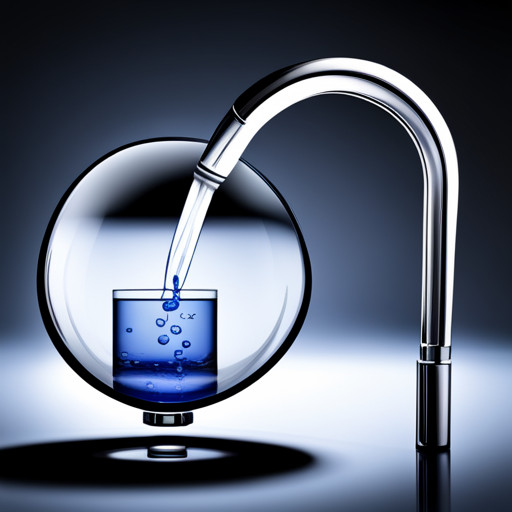
Identifying contaminated water effectively involves looking for key indicators such as unusual color, odor, or taste, along with testing for the presence of harmful substances. These contaminants may include waterborne pathogens, chemical pollutants, or heavy metals, which have been linked to various health issues, including kidney cancer.
Additionally, the safety of bottled water, often deemed a safer alternative, may also come into question due to potential contamination during the bottling process.
To identify contaminated water, several key indicators can be observed:
- *Unusual Color*: Water should ideally be clear. Any unusual coloration, such as brown, yellow, or green, might indicate contamination.
- *Offensive Odor*: A strong or unusual smell, particularly a chlorine-like or rotten egg smell, could be a sign of chemical pollutants.
- *Unpleasant Taste*: Metallic, bitter, or otherwise unusual tastes can suggest the presence of minerals, chemicals, or waterborne pathogens.
- *Presence of Particles*: Visible particles or cloudiness in water might indicate the presence of pollutants.
- *Test Results*: Water testing kits can detect harmful substances such as lead, bacteria, pesticides, nitrates, and pH levels.
Further, bottled water safety is not guaranteed. Contaminants might be introduced during the bottling process or from the plastic bottles themselves. Therefore, it is essential to ensure that bottled water is sourced from a reliable provider and stored properly.
The Importance of Regular Water Quality Testing
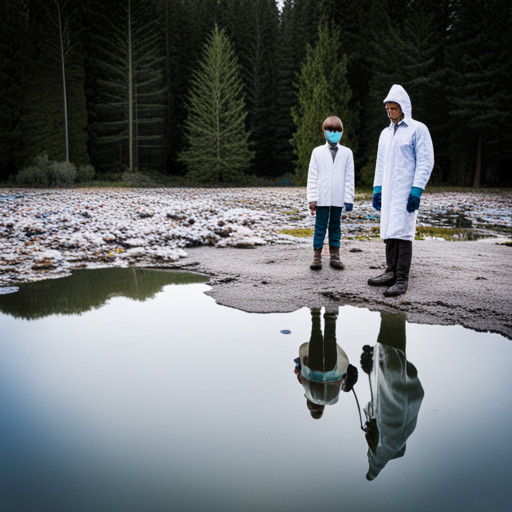
Regular testing of the quality of drinking sources is integral to ensuring the safety and health of individuals and communities, as it allows for the early detection and mitigation of potential contamination. This process is crucial in the prevention of kidney cancer and other health issues associated with toxic water consumption. Depending on the results of such tests, different water filtration options may be recommended to remove specific contaminants.
Water filtration options vary, ranging from simple pitcher filters to more sophisticated reverse osmosis systems. Each option has its own strengths and weaknesses in terms of contaminant removal, cost, and maintenance. For instance, activated carbon filters excel in removing chlorine and organic compounds, but are less effective against heavy metals and microbes. Conversely, reverse osmosis filters are highly effective against a wide range of contaminants, but require more maintenance and can be more costly.
Hydration habits also play an important role in minimizing exposure to contaminated water. Consistent use of filtered water for drinking and cooking can significantly reduce the intake of harmful substances. Additionally, regular maintenance of water filters is critical in ensuring their continued effectiveness.
The frequency of water quality testing can depend on several factors, such as the source of water and the presence of potential contamination sources nearby. For instance, wells in agricultural areas may require more frequent testing due to the risk of pesticide runoff. Municipal water supplies, on the other hand, are typically tested regularly by the supplying agency, but homeowners may choose to conduct additional tests for added peace of mind.
Ways to Improve Water Quality at Home
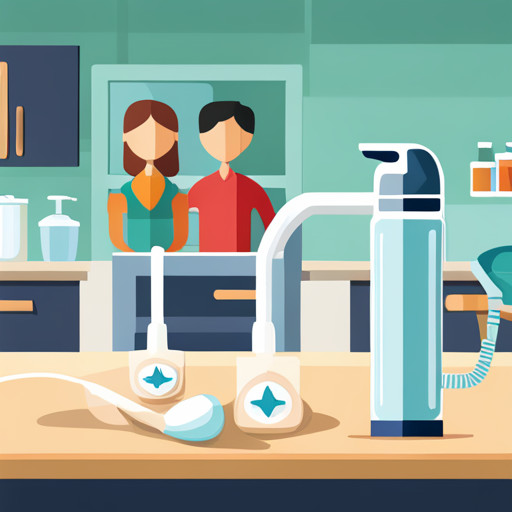
Improving the quality of domestic drinking sources entails various strategies such as the installation of water filtration systems, boiling before consumption, and regular maintenance of plumbing systems. These measures contribute significantly to the reduction of risks associated with ingesting contaminants present in water, which may be a contributing factor to kidney cancer.
The use of water filtration systems effectively removes impurities from water, enhancing its quality. These systems use a series of physical and chemical processes to eliminate contaminants, providing cleaner, safer water for consumption. However, it is essential to consider the types of contaminants present in the water source before selecting the most suitable filtration system.
Boiling water before consumption is a traditional method of purifying water. This method kills bacteria and other microorganisms, making the water safer for drinking. However, boiling does not remove chemical pollutants, hence the need for additional purification methods.
Regular maintenance of plumbing systems is necessary to prevent the buildup of harmful substances such as lead and copper. Old pipes may corrode over time, leading to the contamination of water. Therefore, regular checks and replacements are crucial.
Despite the convenience and perceived safety of bottled water, it presents several dangers. These include the risk of chemical leaching from the plastic bottles and the environmental impact of plastic waste.
To summarize:
- Choose a suitable water filtration system based on the contaminants present in the water source.
- Boiling water is effective in killing bacteria but does not remove chemical pollutants.
- Regular maintenance of plumbing systems prevents the buildup of harmful substances.
- Bottled water presents risks of chemical leaching and environmental damage.
- A combination of methods is often necessary for optimal water purification.
How to Reduce the Risk of Kidney Cancer

Mitigating the incidence of renal malignancies necessitates the adoption of lifestyle modifications such as maintaining a healthy weight, abstaining from tobacco use, moderating alcohol consumption, and ensuring a balanced diet. The role of a healthy diet in reducing the risk of kidney cancer cannot be overemphasized. Healthy Diet Recommendations suggest the consumption of fruits, vegetables, and grains, which are abundant in antioxidants, fiber, and other nutrients that help in the prevention of renal malignancies.
In addition to the diet, physical activity plays a significant role in reducing the risk of kidney cancer. Exercise Regimes need to be maintained regularly, as physical activity aids in weight management, boosts the immune system, and helps to keep blood pressure levels in check. It is recommended that adults engage in a minimum of 150 minutes of moderate-intensity or 75 minutes of vigorous-intensity aerobic physical activity per week.
Furthermore, moderating alcohol consumption is essential in the risk mitigation process. Excessive alcohol intake has been linked to an increased risk of kidney cancer. Individuals are advised to limit their alcohol consumption to moderate levels, defined as up to one drink per day for women and two drinks per day for men.
The Role of Government and Legislation in Water Safety

Legislation and government intervention play crucial roles in ensuring the safety of aquatic resources, thus protecting public health. This involvement becomes even more critical given the established link between toxic water and the prevalence of kidney cancer. However, legislative shortcomings and lack of government accountability can compromise the quality of water supply, posing a significant risk to public health.
These legislative shortcomings may include insufficient regulations, inadequate enforcement, and outdated policies that do not adequately address current concerns about water safety. On the other hand, government accountability is vital for ensuring compliance with water safety standards, as well as for addressing potential issues proactively.
Critical components related to legislation and government intervention in water safety include:
- Implementation of stringent water safety standards
- Regular and comprehensive testing of water sources
- Robust enforcement mechanisms to ensure compliance with regulations
- Updating of legislation to reflect current research and technological advancements
- Public education initiatives about the importance of water safety and the risks of contaminated water
These components, if effectively addressed, can significantly reduce the risk of kidney cancer associated with toxic water. Hence, the role of government and legislation in water safety is a central issue that deserves further exploration and prioritization in public health discussions.
It is apparent that a proactive, stringent, and accountable approach by the government can greatly enhance the safety of aquatic resources, thereby reducing the risk of kidney cancer and other health conditions linked to toxic water.
Frequently Asked Questions
What Are the Early Symptoms of Kidney Cancer That People Should Look Out For?
Early symptoms of kidney cancer often include:
- Blood in urine
- Persistent back pain
- Loss of appetite
- Unexplained weight loss
However, these symptoms may not be evident until the disease is advanced.
Dietary impacts, such as consuming a balanced diet rich in fruits, vegetables, and lean proteins, can play a substantial role in cancer prevention.
Regular medical check-ups are also essential for early detection of this disease.
Are There Any Specific Age Groups or Demographics More Susceptible to Kidney Cancer?
Research indicates that kidney cancer susceptibility varies across age groups and demographics. Significant gender differences exist, with males having a higher incidence rate.
Racial disparities are also evident, with kidney cancer more prevalent among African Americans than Caucasians. These variations may be attributed to genetic factors, lifestyle choices, or exposure to environmental carcinogens.
However, further research is needed to establish definitive underlying causes.
Are There Any Genetic Factors That Can Increase a Person’s Risk of Developing Kidney Cancer?
Genetic factors significantly contribute to an individual's susceptibility to kidney cancer. Genetic testing can reveal inherited syndromes, such as Von Hippel-Lindau disease or hereditary leiomyoma renal cell carcinoma, which increase kidney cancer risk. These syndromes result from specific gene mutations passed through generations.
Therefore, individuals with a family history of kidney cancer or these inherited syndromes may possess an elevated risk of developing this disease. Hence, understanding one's genetic makeup can be instrumental in proactive kidney cancer prevention.
Besides Water, What Other Lifestyle Factors Can Contribute to the Risk of Kidney Cancer?
Lifestyle factors significantly contribute to the risk of kidney cancer. A primary factor is smoking, with research indicating a strong correlation between tobacco use and the disease. The carcinogenic compounds in tobacco can damage kidney cells, potentially leading to cancer.
Furthermore, obesity is another major risk factor. Excessive body weight can cause hormonal imbalances and high blood pressure, both of which can increase the risk of kidney cancer.
Consequently, maintaining a healthy weight and avoiding tobacco use are crucial preventive measures.
Can Kidney Damage Caused by Toxic Water Be Reversed or Treated?
The potential for reversing kidney damage caused by toxic water largely depends on the extent and duration of exposure. Detoxification methods and treatment innovations continue to evolve. Early intervention can often prevent permanent damage.
However, persistent exposure to nephrotoxic agents in contaminated water may lead to irreversible harm. Therefore, continuous research is needed to develop more effective treatments and prevention strategies to mitigate the risks associated with toxic water.
Conclusion
In conclusion, water quality presents an underappreciated, yet significantly impactful, role in the incidence of kidney cancer. It acts as the invisible hand, unknowingly guiding individuals towards a potential health catastrophe.
Through understanding this insidious relationship, measures can be implemented to enhance water safety, thereby reducing kidney cancer risk.
These actions, coupled with government intervention, can serve as potent tools in the fight against this disease.

This post has been generated by AI and was not reviewed by editors. This is Not legal advice. Please consult with an attorney.



